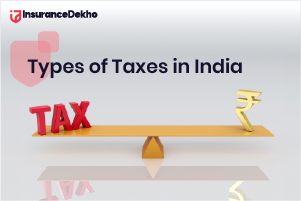Difference Between EPF vs NPS
Updated On Feb 14, 2024
When it comes to retirement planning, one of the most critical decisions involves choosing the right investment vehicle. Two popular options in India are the Employee Provident Fund (EPF) and the National Pension System (NPS). Both offer unique benefits and features aimed at securing a financially stable retirement. Understanding the nuances of each can help you make an informed decision that aligns with your retirement goals, financial situation, and risk appetite. As you explore these options, remember that an effective retirement plan is a cornerstone of sound financial health.
Table of Contents
What is EPF?
The Employee Provident Fund (EPF) is a retirement benefit scheme for salaried employees in India. Here's a brief overview:
|
Aspect |
Details about EPF |
|
Nature |
A mandatory savings scheme for employees in organizations with 20 or more workers. |
|
Contributions |
Both employee and employer contribute 12% of the employee's basic salary plus dearness allowance. |
|
Returns |
Interest rates are decided by the EPFO (Employees' Provident Fund Organisation) annually. |
|
Withdrawal |
Full withdrawal is allowed at retirement or when unemployed for more than two months. Partial withdrawals are permitted for specific purposes. |
|
Tax Benefits |
Contributions are eligible for tax deduction under Section 80C. Interest earned and withdrawal amount are tax-free, subject to conditions. |
|
Liquidity |
Considered less liquid due to restrictions on withdrawals before retirement. |
|
Risk |
Low-risk investment, as it is backed by the government. |
EPF is designed to provide financial security post-retirement, with the added benefits of compounding interest and tax savings.
What are the Advantages of EPFs?
The Employee Provident Fund (EPF) offers several benefits, making it a popular retirement savings choice for employees in India. Here are its key advantages:
|
Advantage |
Details |
|
Guaranteed Returns |
The interest rate is set by the EPFO and offers guaranteed returns, making it a low-risk investment. |
|
Employer Contribution |
Equal contribution from the employer enhances the savings potential. |
|
Tax Benefits |
Contributions, interest earned, and withdrawal amounts are tax-exempt under Section 80C, making it a tax-efficient investment. |
|
Compounded Interest |
Interest on EPF accumulates annually, leading to significant growth over long periods. |
|
Easy Withdrawal |
Provides the option of partial withdrawal for specific purposes like education, marriage, and house purchase. |
|
Retirement Savings |
Aims to build a substantial retirement corpus. |
|
Loan Facility |
Allows for availing loans against the PF balance for emergencies. |
|
Universal Account Number (UAN) |
UAN facilitates easy management and transfer of PF accounts across jobs. |
EPF is designed to offer financial security to employees post-retirement, with a focus on steady growth and tax efficiency.
What is NPS?
The National Pension System (NPS) is a voluntary, long-term retirement savings scheme in India. Here's an overview:
|
Aspect |
Details about NPS |
|
Nature |
A voluntary pension scheme open to all Indian citizens, primarily targeting retirement savings. |
|
Contributions |
Flexible contributions with no upper limit. However, there are certain minimum contribution requirements. |
|
Returns |
Market-linked returns based on the performance of chosen investment options (Equity, Corporate bonds, Government securities). |
|
Withdrawal |
Partial withdrawal allowed under specific circumstances. Major corpus withdrawn as a lump sum at retirement, with the remainder converted to an annuity. |
|
Tax Benefits |
Contributions eligible for tax deduction under Section 80C and additional deduction under Section 80CCD(1B). Annuity income is taxable. |
|
Liquidity |
Offers limited liquidity before retirement age. |
|
Risk |
Higher risk compared to EPF due to exposure to equities and market-linked instruments. |
|
Investment Choices |
Offers flexibility in choosing the investment mix and fund managers. |
NPS provides a more market-linked approach to retirement savings, offering the potential for higher returns coupled with tax benefits, albeit with higher risk and less liquidity compared to EPF.
What are the Advantages of NPS?
The National Pension System (NPS) offers several benefits, especially for those looking for a market-linked retirement plan. Here are its key advantages:
|
Advantage |
Details |
|
Market-Linked Returns |
Offers the potential for higher returns as it is linked to market performance with various investment options. |
|
Flexibility in Investment |
Provides options to choose between different asset classes and fund managers based on risk appetite. |
|
Tax Efficiency |
Contributions, up to a certain limit, are eligible for tax deductions under Section 80C and 80CCD. |
|
Additional Tax Benefit |
Exclusive additional tax deduction of up to ₹50,000 under Section 80CCD(1B) over and above the ₹1.5 lakh limit under Section 80C. |
|
Tier I and II Accounts |
Offers two types of accounts - Tier I for retirement savings and Tier II for voluntary savings. |
|
Partial Withdrawal |
Allows for limited partial withdrawals before retirement under specific conditions. |
|
Regulated |
Regulated by the Pension Fund Regulatory and Development Authority (PFRDA), ensuring transparency and security. |
|
Portable |
NPS accounts can be operated from anywhere in the country, irrespective of job changes. |
NPS is designed for individuals looking for a more aggressive approach to retirement savings with the flexibility of market-linked investments.
EPF vs NPS - What are the Main Differences?
Comparing EPF and NPS is crucial to understanding which suits your retirement planning needs better. Here’s a table highlighting the main differences:
|
Criteria |
EPF |
NPS |
|
Nature of Scheme |
Mandatory for employees in organizations with more than 20 workers. |
Voluntary retirement savings scheme. |
|
Investment Type |
Primarily in government securities, debt instruments. |
Options to invest in equities, government and corporate bonds. |
|
Returns |
Fixed interest rates set by EPFO. |
Market-linked returns based on the chosen investment option. |
|
Risk Factor |
Low risk due to government backing. |
Variable risk based on the choice of assets. |
|
Tax on Maturity |
Exempt from tax if certain conditions are met. |
60% of corpus tax-free at retirement, 40% compulsorily annuitized and taxed accordingly. |
|
Withdrawal |
Full withdrawal allowed at retirement or under certain conditions like unemployment. |
Partial withdrawal allowed, mandatory to buy an annuity with a part of the corpus at retirement. |
|
Contribution |
Fixed percentage of salary (12% by both employee and employer). |
Flexible contributions with no upper limit. |
|
Liquidity |
Lesser liquidity with restrictions on withdrawal. |
Offers partial withdrawal options. |
This comparison highlights that while EPF is a more traditional, low-risk retirement savings option, NPS offers more flexibility and potential for higher returns but with higher risks and mandatory annuity purchase post-retirement.
NPS vs EPF - Which to Choose?
Choosing between the National Pension System (NPS) and the Employee Provident Fund (EPF) depends on individual financial goals, risk appetite, and retirement planning needs. Here's a comparative analysis to aid in decision-making:
|
Criteria |
NPS |
EPF |
Considerations |
|
Investment Approach |
Market-linked, with exposure to equities. |
Primarily debt-oriented, with stable returns. |
If you seek higher returns and can tolerate risk, NPS may be suitable. EPF for conservative investors. |
|
Tax Benefits |
Additional tax deduction under Section 80CCD(1B). |
Contributions and interest are tax-exempt under certain conditions. |
NPS offers more tax-saving potential. EPF is efficient for long-term tax-free savings. |
|
Return Potential |
Higher potential returns due to equity exposure. |
Generally lower but stable and guaranteed returns. |
NPS for growth-oriented investors, EPF for those preferring guaranteed returns. |
|
Liquidity and Withdrawal |
Limited liquidity, mandatory annuity purchase after retirement. |
Better liquidity, full withdrawal allowed at retirement. |
EPF is preferable for those who want easier access to funds. |
|
Flexibility |
Flexible contributions, choice of fund managers. |
Fixed contribution rate, managed by EPFO. |
NPS offers more control over your investments. |
|
Risk Factor |
Higher risk due to market fluctuations. |
Lower risk, backed by the government. |
Risk-averse investors may prefer EPF. |
Conclusion
When planning for retirement, both EPF and NPS offer unique advantages and cater to different investment styles and needs. EPF is ideal for those who prefer a safer, more stable approach to retirement savings, while NPS suits those willing to take on more risk for potentially higher returns. Your choice should align with your financial goals, risk tolerance, and the need for liquidity. It's also possible to participate in both schemes simultaneously, diversifying your retirement portfolio.
FAQs on EPF vs NPS
Q1: What is the main difference between EPF and NPS?
A1: EPF is a mandatory savings scheme for employees with stable, government-backed returns, while NPS is a voluntary, market-linked retirement scheme offering potentially higher returns with variable risk.
Q2: Can I invest in both EPF and NPS?
A2: Yes, you can invest in both EPF and NPS simultaneously, which can be a good strategy for diversifying your retirement portfolio.
Q3: Which offers better tax benefits, EPF or NPS?
A3: Both offer tax benefits under Section 80C. NPS provides an additional deduction of up to ₹50,000 under Section 80CCD(1B).
Q4: Is NPS riskier than EPF?
A4: Yes, NPS carries higher risk compared to EPF as it is linked to market performance, especially in equity investments.
Q5: Can I withdraw my entire NPS corpus at retirement?
A5: Upon retirement, you can withdraw up to 60% of your NPS corpus tax-free. The remaining 40% must be used to purchase an annuity plan.
Q6: What happens to EPF when I change jobs?
A6: When you change jobs, your EPF account can be transferred to your new employer. Your UAN remains the same.
Q7: How are the returns on EPF calculated?
A7: EPF returns are calculated based on an interest rate set by the EPFO annually and compounded yearly.
Q8: Can I opt-out of EPF?
A8: EPF is mandatory for eligible employees, and opting out is not generally possible once you are enrolled.
Q9: Who manages the funds in NPS?
A9: NPS funds are managed by professional fund managers appointed by the PFRDA, and investors have the choice to select their fund manager.
Q10: How do I decide between EPF and NPS?
A10: Your decision should be based on your risk tolerance, retirement goals, need for liquidity, and preference for guaranteed returns (EPF) versus market-linked returns (NPS).



























